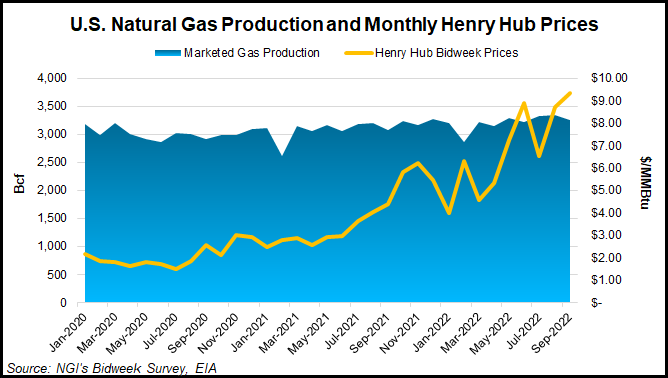Natural Gas Prices | E&P | Markets | NGI All News Access | NGI The Weekly Gas Market Report
Domestic E&Ps Hedging Less Natural Gas, More Oil into 2023 – For Now
© 2024 Natural Gas Intelligence. All rights reserved.
ISSN © 1532-1231 | ISSN © 2577-9877 | ISSN © 1532-1266 |



